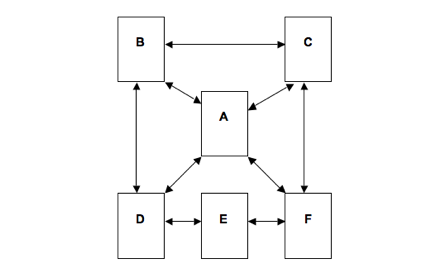12.5: Web Publishing versus Hypertext
- Page ID
- 6542
After considering the advantages and disadvantages of creating a research-based Web site in the first place, the next step is to decide if you want to merely publish your research essay on the Web, or if you want to develop a hypertext version of your research project.
By merely “publish,” I mean the process where you take your research essay as it exists on paper, convert it into an “HTML file” or as a “PDF file” (Portable Document Format) and then upload it to the Web. By hypertext, I mean the process where you create a series of HTML files that contain the text to your research project and that contain highlighted words, phrases, or images that allow potential readers to explore and read your research in nonsequential ways.
A Web published research essay is really no different than the sort of traditional research essay project I discussed in chapter ten, except that it is available on the World Wide Web. If we were to map this essay, it might look something like this:

Figure \(\PageIndex{1}\)
With Web published research essay projects, you are expecting your readers to read in a particular order, from beginning to end, from “A” to “F.” In fact, each of these different parts of your research essay project could be part of one text file, available to your reader to scroll through or print and read later. And of course, if you decide to publish your research essay as a PDF, then readers will have to either print your essay or use software like Adobe Acrobat Reader to read your essay.
There are two advantages to web publishing your essays like this:
- It is easy to do. Since most word processing software allows users to convert files into HTML or PDFs, publishing a paper-based research project is simply a matter of saving in a different format and uploading to a server.
- Web publishing preserves the order and “feel” of a paper-based research project.This is especially true of PDFs.
The main disadvantage of Web publishing like this is it isn’t as dynamic or as flexible as a hypertextual research project. This depends on the audience of course, but often times, web readers are more likely to read and use your web site if it is presented as hypertext intended to be read on the screen.
A “hypertextual” research project might be mapped like this:

Figure \(\PageIndex{2}\)
In this example, each of the boxes represents a different part of the Web site, and thus a different file—instead of scrolling from one part of the Web site to the next, readers have to follow links to other parts of the site. While most hypertext Web sites begin with some starting point (often a sort of “table of contents” page), they are written and designed in a way that allows for multiple ways of reading. Readers could as easily read from point “D” to point “F” as they can read from point “A” to point “B,” and, if the hypertext is effectively presented, both readings will be informative to the reader.
The main advantage of presenting a research project as a hypertext is basically the opposite of simply “Web publishing” a research essay: hypertexts are dynamic and more interactive than traditional essays presented on the Web, and readers they give readers more and different opportunities to interact with them.
Think of your own reading habits when it comes to the World Wide Web: chances are, you are more likely to read through a site that presents text in small chunks and that allows you to select links to the part of the site that interests you. Further, if you are a typical Web reader, you are less likely to read through a site if you have to scroll down the page or print out the site to read it.
Along these lines, the main disadvantages of research projects presented as hypertexts are the opposite of Web published research essays:
- They aren’t as easy to make. For one thing, it might take a considerable amount of work to divide up the parts of your research project into different parts of a hypertext. For another, each separate part or “page” of your Web site (represented here by the different lettered boxes) is a separate HTML document that you need to create and maintain. While this isn’t difficult to do, it does take some time and effort, certainly more so than if you were to simply convert a word-processed file into a Web page.
- Hypertextual research projects can’t preserve the order of presentation. After all, one of the points of a hypertext is to give your reader options in how they want to read it. While you can create hypertexts that give readers the option of reading the project straight through, your readers might not choose to read that way, which can cause some confusion.


